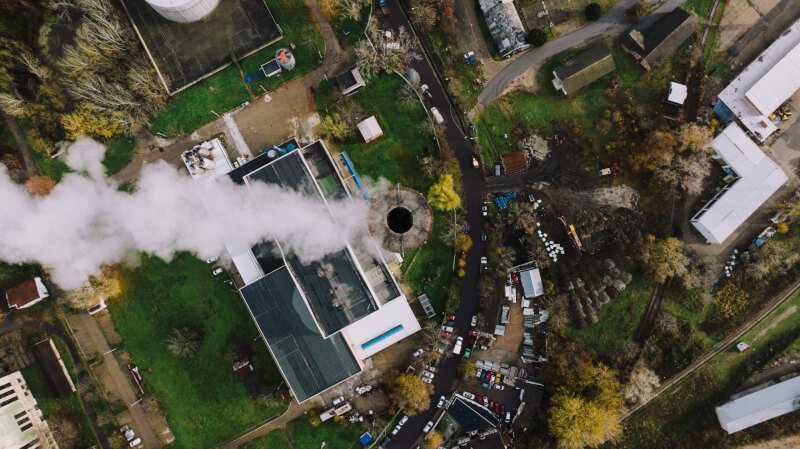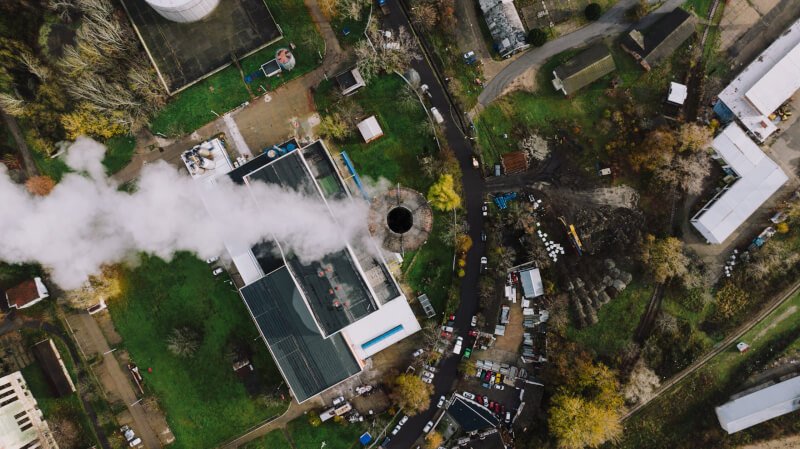If you’re a city dweller with a green thumb, you may have wondered how to bring the beauty of nature indoors in an urban setting. Luckily, there are plenty of options for indoor gardening that can transform your living space into a vibrant oasis. From small-scale herb gardens to vertical plant walls, this article will explore the exciting world of urban indoor gardening, providing you with ideas and inspiration to create your very own urban jungle. Whether you have a tiny apartment or a spacious loft, there’s a gardening option that suits your needs. Let’s dive in and discover the possibilities of indoor gardening in urban settings!

A. Hydroponics
1. Nutrient Film Technique (NFT)
Nutrient Film Technique (NFT) is a hydroponic system that involves a constant flow of a thin film of nutrient-rich solution over the plant roots. This technique utilizes a sloping trough or channel in which the nutrient solution flows, allowing the roots to absorb the necessary nutrients. NFT systems are commonly used for growing leafy greens and herbs, as they require less space and water compared to traditional soil-based gardening.
2. Deep Water Culture (DWC)
Deep Water Culture (DWC) is another popular hydroponic method that involves suspending plant roots in a nutrient-rich water solution. In this system, plants are placed in pots or baskets with their roots submerged in the water, allowing for direct nutrient uptake. Oxygen is supplied to the roots through air pumps or air stones to prevent root rot. DWC systems are suitable for growing larger plants like tomatoes or cucumbers and offer a low-maintenance approach to indoor gardening.
3. Aeroponics
Aeroponics is a unique and innovative hydroponic technique that involves growing plants without any soil or water. Instead, the roots are suspended in air and misted with a nutrient solution at regular intervals. This method provides ample oxygen to the roots, promoting faster growth and increased yields. Aeroponics is highly efficient, using less water and space than traditional gardening methods. It is ideal for growing a wide range of plants, including fruits, vegetables, and herbs.
4. Ebb and Flow
Ebb and Flow, also known as Flood and Drain, is a hydroponic system that periodically floods the plant roots with a nutrient solution. The nutrient solution is pumped into the growing tray, allowing the roots to absorb the necessary nutrients. Once the desired level is reached, the excess solution is drained back into a reservoir for reuse. This cyclic flooding and draining mimic natural watering cycles and provide adequate oxygenation to the root system. Ebb and Flow systems are versatile and can be used to grow a variety of plants.
5. Drip System
Drip systems are one of the most commonly used hydroponic methods, especially in larger-scale operations. This system utilizes a network of tubes and emitters to deliver a controlled amount of nutrient solution directly to the plant’s root system. The drippers or emitters release drops of the solution at a slow and steady rate, ensuring consistent hydration and nutrient supply. Drip systems are highly customizable and can accommodate different plant varieties and growth stages.
Hydroponics offers a versatile and efficient way to grow plants indoors, even in urban settings with limited space. By choosing the right hydroponic method that suits your specific needs and preferences, you can enjoy the benefits of fresh, homegrown produce throughout the year.
B. Aquaponics
1. Setting up a fish tank
Aquaponics combines hydroponics and aquaculture, creating a symbiotic relationship between fish and plants. In an aquaponic system, fish produce waste that is converted into nutrients by beneficial bacteria. These nutrients are then absorbed by plants, allowing them to grow and thrive. To set up an aquaponic system, you will need a fish tank to house the fish. It is important to choose a tank size and type suitable for the fish species you plan to keep.
2. Choosing the right plants
Selecting the right plants for your aquaponic system is crucial to ensure successful growth. Leafy greens such as lettuce, spinach, and kale are popular choices, as they absorb nutrients efficiently and grow well in water-based environments. Herbs like basil, mint, and cilantro also thrive in aquaponics systems. It is essential to consider the specific requirements of each plant, such as lighting and temperature, to ensure optimal growth.
3. Maintaining the balance
Maintaining the balance in an aquaponics system involves monitoring water quality, pH levels, and nutrient levels. Regular testing of the water parameters is necessary to ensure the well-being of both fish and plants. It is important to keep the water temperature stable and provide adequate aeration to support the fish. Additionally, periodic adjustments to the nutrient solution may be required to meet the plants’ changing needs as they grow.
4. Harvesting the produce
Harvesting the produce from an aquaponic system is a rewarding experience. Leafy greens can be harvested by gently removing the outer leaves, allowing the plant to continue growing. Herbs can be harvested by snipping off mature leaves or stems as needed. Care should be taken not to disturb the fish or disturb the delicate balance of the system during harvesting.
5. Benefits of aquaponics
Aquaponics offers several benefits for indoor gardening enthusiasts. Firstly, it is a sustainable and eco-friendly method that conserves water by recirculating it within the system. The combination of fish farming and plant cultivation creates a closed-loop system that reduces waste and chemical inputs. Additionally, aquaponics eliminates the need for synthetic fertilizers, as the fish waste provides natural nutrients for the plants. This method also allows for year-round gardening, providing a constant supply of fresh produce regardless of the season.
Aquaponics is an innovative and efficient way to cultivate both fish and plants in a self-sustaining system. With proper care and attention, you can create a thriving aquaponic garden in your indoor space, enjoying the benefits of homegrown fish and vegetables.

C. Vertical Gardening
1. Wall-mounted planters
Wall-mounted planters are an excellent solution for urban gardeners with limited floor space. These planters are designed to be mounted on walls or vertical surfaces, allowing you to grow plants upward instead of outward. Wall-mounted planters come in various sizes and materials and can be easily attached to walls using hooks or brackets. They are suitable for growing a wide range of plants, from small herbs to trailing vines.
2. Hanging planters
Hanging planters are a classic and versatile option for vertical gardening. These planters are suspended from overhead structures such as hooks or beams, making use of unused vertical space. They come in various shapes and sizes, including traditional baskets, modern containers, and even creatively repurposed items. Hanging planters are ideal for growing cascading plants like ivy or ferns, adding a touch of greenery to any room.
3. Stackable containers
Stackable containers are a popular choice for vertical gardening, as they allow you to maximize vertical space efficiently. These containers are designed to be stacked on top of each other, creating a vertical tower of plants. They often feature a tiered design with multiple levels, allowing you to grow several plants in a compact area. Stackable containers are commonly used for growing salad greens, herbs, and flowers.
4. Living walls
Living walls, also known as green walls or vertical gardens, are a stunning way to incorporate plants into indoor spaces. Living walls are created by attaching plants to a vertical structure or using modular panels with built-in planting pockets. These walls not only provide a visually appealing display of plants but also offer numerous benefits, such as improved air quality and sound insulation. Living walls can be customized to suit your preferences, from small installations to large-scale designs.
5. Benefits of vertical gardening
Vertical gardening offers several advantages for indoor gardeners. Firstly, it allows you to make the most of limited space, turning unused walls and vertical surfaces into lush green spaces. Vertical gardens also provide a natural and soothing backdrop, improving the overall ambiance of any room. Furthermore, they can act as natural air purifiers, filtering out pollutants and improving indoor air quality. Lastly, vertical gardening offers easier access to plants for watering, pruning, and harvesting.
Vertical gardening is a creative and practical solution for bringing plants into urban living spaces. Whether you choose wall-mounted planters, hanging planters, stackable containers, or living walls, vertical gardening allows you to enjoy the beauty and benefits of greenery even in the smallest of spaces.
D. Container Gardening
1. Selecting the right containers
When practicing container gardening, choosing the right containers is essential for the health and growth of your plants. Containers should have sufficient drainage holes to prevent waterlogging and allow excess water to escape. They should also be large enough to accommodate the root system of the plant and provide room for growth. Various materials, such as ceramic, plastic, and terracotta, are available for containers, each with its own advantages and considerations.
2. Choosing the right soil
Selecting the right soil for container gardening is crucial, as it directly affects the plant’s growth and overall health. A lightweight potting mix specifically formulated for containers is recommended, as it provides good drainage while retaining enough moisture for the plants. Potting mixes typically contain a blend of materials like peat moss, vermiculite, and perlite, which provide a balanced environment for root development and nutrient uptake.
3. Picking suitable plants
Container gardening offers a wide range of plant options, from ornamental flowers to herbs and vegetables. When selecting plants for your containers, consider their growth habit, size, and light requirements. Some plants are more suited to container gardening due to their compact growth or ability to thrive in limited space. It is essential to choose plants that are compatible in terms of light requirements, water needs, and growth rate to ensure harmonious growth.
4. Proper watering and fertilization
Watering and fertilization are important aspects of container gardening. Containers tend to dry out more quickly compared to in-ground gardening, so regular watering is necessary to keep the plants hydrated. It is crucial to monitor the moisture level of the soil and avoid overwatering, as it can lead to root rot. Fertilizing container plants is also essential, as nutrients can get depleted more rapidly in confined spaces. Using a balanced, slow-release fertilizer or organic options is recommended for sustained plant growth.
5. Decorative container ideas
In addition to their practical purpose, containers can also serve as decorative elements in your indoor gardening display. There are numerous creative container ideas to enhance the aesthetic appeal of your plants. You can repurpose old teapots, mason jars, or vintage tins as unique planters. Hanging baskets or macrame plant hangers add a touch of bohemian charm to your living space. Terrariums and glass containers create a mini greenhouse effect, allowing you to showcase the beauty of your plants.
Container gardening offers the flexibility to garden in any space, making it an ideal choice for urban dwellers with limited access to outdoor areas. With proper container selection, soil, plant choices, and care, you can create a thriving and visually appealing indoor garden.

E. Indoor Herb Gardens
1. Choosing the right herbs
When creating an indoor herb garden, choosing the right herbs is essential for success. Consider the herbs you frequently use in your cooking or those that have medicinal properties you desire. Some popular herbs for indoor gardening include basil, thyme, rosemary, mint, and parsley. It is important to consider the space, lighting, and temperature requirements of each herb to ensure optimal growth.
2. Container options for herb gardens
Container options for herb gardens are diverse, allowing you to personalize your indoor garden to match your style and space. Small pots or containers with drainage holes are suitable for growing individual herbs. Alternatively, you can create a herb garden in a larger container or planter, grouping compatible herbs together. Hanging planters or wall-mounted herb gardens are also excellent choices, freeing up valuable counter space.
3. Providing the right amount of light
Proper lighting is crucial for the success of an indoor herb garden. Most herbs require at least six hours of direct sunlight daily. If natural sunlight is limited, you can supplement it with artificial grow lights. LED grow lights are energy-efficient and provide the right spectrum of light needed for plant growth. Position your herbs near a south or west-facing window or adjust the placement of grow lights to ensure they receive adequate light.
4. Harvesting and using the herbs
Harvesting herbs from your indoor garden is a rewarding experience that allows you to enjoy the freshest flavors in your dishes. When harvesting herbs, pinch or snip off leaves or stems just above a leaf node or joint. This method promotes new growth and maintains the overall health of the plant. Freshly harvested herbs can be used immediately in your culinary creations or dried for later use.
5. Benefits of indoor herb gardens
Indoor herb gardens offer numerous benefits beyond the convenience of having fresh herbs at your fingertips. Firstly, growing herbs indoors allows you to control the environment and eliminate exposure to pesticides or other chemical contaminants. Secondly, herbs can improve indoor air quality by releasing oxygen and absorbing toxins. They also add natural fragrance to your living space. Lastly, cultivating herbs indoors is a cost-effective and sustainable way to reduce grocery expenses and food waste.
Indoor herb gardens provide endless possibilities for culinary creativity and contribute to a healthier and more sustainable lifestyle. By selecting the right herbs, containers, and providing adequate lighting, you can enjoy a bountiful harvest of fresh herbs year-round.
F. Terrariums
1. Types of terrariums
Terrariums are miniature ecosystems that can be created in glass containers. There are two main types of terrariums: open and closed. Open terrariums have an opening that allows for air circulation, while closed terrariums are sealed, creating a self-sustaining environment. Both types offer unique opportunities for indoor gardening and can be customized to suit your preferences.
2. Creating a terrarium environment
To create a terrarium, start with a clean glass container that is large enough to accommodate your chosen plants. Add a layer of gravel or small rocks at the bottom to provide drainage. On top of the gravel, add a layer of activated charcoal to help filter the air and prevent odors. Next, add a layer of potting soil suitable for the plants you plan to include. Finally, carefully plant your chosen plants, ensuring they have enough space to grow.
3. Choosing the right plants
When selecting plants for a terrarium, it is important to choose species that thrive in the high humidity and low airflow conditions typically found in these enclosed environments. Some popular terrarium plants include ferns, mosses, succulents, and air plants. It is also essential to consider the plants’ growth rate and ultimate size, ensuring they will not outgrow the terrarium.
4. Caring for a terrarium
Caring for a terrarium primarily involves maintaining the right moisture levels and light conditions. Closed terrariums require minimal watering as they create their own water cycle through condensation. However, it is important to monitor the humidity levels and open the terrarium occasionally to allow for air circulation. Open terrariums may require occasional watering depending on the moisture preferences of the plants. Additionally, placing the terrarium in indirect sunlight or using artificial grow lights ensures proper photosynthesis.
5. Terrarium design ideas
Terrariums allow for endless creative possibilities when it comes to design and display. You can create a woodland-inspired terrarium with ferns, moss, and small figurines that resemble a miniature forest floor. Alternatively, a desert-themed terrarium can feature cacti, succulents, and decorative sand or stones. With the right combination of plants, colored sands, rocks, and other decorative elements, you can design a terrarium that reflects your personal style and adds a unique touch to your indoor space.
Terrariums bring a touch of nature and beauty into any indoor setting. Whether you choose an open or closed terrarium, the self-contained ecosystem offers a low-maintenance and visually appealing form of indoor gardening.
G. Window Sill Gardens
1. Choosing the right plants
When creating a window sill garden, choosing the right plants is crucial for success. Consider the amount of sunlight your window receives throughout the day and select plants that thrive in those conditions. Herbs like basil, chives, and thyme are popular choices for window sill gardens, as they require moderate sunlight. Additionally, compact flowering plants like African violets or succulents can bring color and beauty to your window sill.
2. Finding the right location
Finding the right location for your window sill garden is essential for optimal growth. Choose a window that receives adequate sunlight for your selected plants. South-facing windows generally provide the highest light intensity, while east or west-facing windows offer moderate light levels. Ensure that the plants have enough space between them to prevent overcrowding and promote proper air circulation.
3. Providing proper drainage
Proper drainage is crucial to prevent waterlogging and root rot in window sill gardens. Ensure that your pots or containers have drainage holes that allow excess water to escape. Additionally, place a saucer or tray beneath the pots to catch any excess water. Empty the saucer regularly to avoid water accumulation and potential water damage to your window sill.
4. Watering and fertilizing
Watering and fertilizing window sill gardens require careful attention to the specific needs of each plant. Plants may require more frequent watering than outdoor gardens as they are exposed to indoor heating or air conditioning, which can dry out the soil. Monitor the soil moisture level and water accordingly, allowing the soil to dry slightly between waterings. Applying a balanced liquid fertilizer at half the recommended strength every few weeks can help promote healthy growth.
5. Maintaining a healthy window sill garden
To maintain a healthy window sill garden, it is important to regularly monitor the plants for signs of pests or diseases. Inspect the leaves and stems for any discoloration, damage, or unusual growth. Remove any dead or diseased plant material promptly to prevent the spread of pathogens. Additionally, regularly dust the leaves to keep them clean and free from debris, ensuring optimal photosynthesis.
Window sill gardens provide a close connection to nature and allow you to maximize the natural light available in your home. By selecting the right plants, providing proper drainage, and attentive care, you can create a thriving and visually pleasing indoor garden on your window sill.
H. Mushroom Cultivation
1. Types of mushrooms to grow indoors
Growing mushrooms indoors is a unique and rewarding experience. Several types of mushrooms are well-suited for indoor cultivation, including oyster mushrooms, shiitake mushrooms, and white button mushrooms. Each variety has different temperature, humidity, and substrate requirements, so it is important to choose the type that aligns with your specific growing conditions and preferences. Mushroom growing kits are readily available and provide all the necessary materials for successful cultivation.
2. Creating the ideal growing conditions
Creating the ideal growing conditions for mushrooms involves controlling temperature, humidity, and light. Most mushrooms thrive in cool temperatures ranging from 55°F to 75°F (13°C to 24°C). Humidity levels should be kept around 80% to 90%, which can be achieved by misting the growing area regularly or using a humidifier. Light requirements for mushrooms are minimal, and they prefer indirect or filtered natural light or low-intensity artificial light.
3. Spawning and colonization
Spawning refers to the process of inoculating a substrate with mushroom mycelium, which is the vegetative part of the fungus. Mushroom mycelium can be purchased or obtained from a reputable source and is typically mixed with a substrate such as sawdust, straw, or coffee grounds. The inoculated substrate is then placed in a container or bag and allowed to colonize, which typically takes a few weeks. During colonization, the mycelium spreads throughout the substrate, establishing a network of fine threads.
4. Harvesting and storing mushrooms
Harvesting mushrooms can begin once the fruiting bodies, known as mushrooms, have fully developed. Each type of mushroom has specific signs of maturity, such as the cap fully expanding or the veil breaking. Carefully cut or gently twist the mushrooms from the substrate to avoid damaging the mycelium. It is best to harvest the mushrooms when they are young and firm, as they will have the best flavor and texture. Mushrooms can be stored in a paper bag or container in the refrigerator for up to a week.
5. Health benefits of mushrooms
In addition to their culinary uses, mushrooms offer various health benefits. They are a rich source of important nutrients like vitamins, minerals, and antioxidants. Mushrooms are low in calories and fat but provide significant amounts of protein and dietary fiber. They also contain compounds that may boost immune function, reduce inflammation, and support cardiovascular health. By growing and consuming mushrooms at home, you can enjoy these nutritional benefits and the unique flavors they bring to your dishes.
Mushroom cultivation is a fascinating indoor gardening option that allows you to cultivate a delicacy right in your own home. With the right mushroom variety, ideal growing conditions, and proper care, you can enjoy a bountiful harvest of these delicious and nutritious fungi.
I. Indoor Fruit Trees
1. Choosing the right tree variety
Growing fruit trees indoors offers the opportunity to enjoy fresh, homegrown fruit year-round. When selecting fruit tree varieties for indoor cultivation, choose dwarf or miniatures varieties that are better suited for confined spaces. Some popular options include citrus trees like lemons or oranges, fig trees, or miniature apple or pear trees. Research the specific needs of each variety regarding temperature, sunlight, and pollination requirements, ensuring they align with your indoor environment.
2. Providing the right growing conditions
Providing the right growing conditions is crucial for the successful cultivation of indoor fruit trees. Most fruit trees require bright light for several hours each day, so placing them near a south-facing window or supplementing with grow lights is necessary. Temperature ranges for fruit trees vary, but most thrive in temperatures between 60°F and 80°F (15°C to 27°C). Adequate airflow and humidity control are also important considerations, as stagnant air and excessively dry conditions can affect fruit set and overall growth.
3. Pollination and fruiting
Pollination is a critical factor for the fruiting of many fruit tree varieties. Some fruit trees, like citrus, are self-pollinating and do not require additional trees for fruit set. However, other varieties, such as apples or pears, may require cross-pollination from another compatible tree to produce fruit. In the absence of natural pollinators, hand pollination techniques like gently brushing the flowers with a soft brush or cotton swab can stimulate fruit set.
4. Pruning and maintenance
Pruning and maintenance are important aspects of caring for indoor fruit trees. Regular pruning helps manage the size and shape of the tree, promotes airflow, and removes dead or diseased branches. It is important to research the pruning requirements of each specific fruit tree variety, as techniques and timing can vary. Additionally, regular monitoring for pests or diseases, such as aphids or fungal infections, allows for early intervention to prevent damage to the tree.
5. Harvesting and enjoying the fruits
The joy of growing indoor fruit trees culminates in the harvest and enjoyment of the fruits. Each variety has specific signs of ripeness, such as color changes or a slight softening. Harvest the fruits when they are fully ripe but still firm to the touch. It is recommended to pick fruits directly from the tree rather than allowing them to fall to the ground. Enjoy the fruits fresh or use them in a variety of culinary creations, showcasing the flavors and fragrance of your indoor harvest.
Indoor fruit trees offer the satisfaction of growing your own fruits, even in limited space. By selecting the right tree variety, providing optimal growing conditions, and practicing proper care, you can experience the delight of homegrown fruit year-round.
J. Indoor Flower Gardens
1. Selecting the right flowers
Indoor flower gardens add beauty and color to any indoor space. When selecting flowers for indoor gardening, consider the lighting conditions, temperature, and humidity levels of your environment. Some popular flowering plants for indoors include orchids, African violets, peace lilies, and cyclamens. Choose flowers with similar care requirements to ensure they thrive in your indoor setting.
2. Choosing suitable containers
Choosing suitable containers for your indoor flower garden can enhance both aesthetics and functionality. Consider the size and growth habit of the flowers when selecting containers, ensuring they have enough space for root development. Ceramic or terracotta pots are popular choices, as they provide stability and breathability. Alternatively, decorative planters or hanging baskets can add a touch of style to your indoor flower display.
3. Providing proper lighting
Proper lighting is essential for the healthy growth and blooming of indoor flowering plants. Most flowering plants require bright, indirect light to thrive. Place your flower containers near a south or west-facing window to provide adequate sunlight. If natural light is limited, supplement it with artificial grow lights. LED grow lights provide the right spectrum of light for flowering plants and can be adjusted in intensity and duration to meet their specific needs.
4. Watering and fertilizing flowers
Watering and fertilizing routines are crucial for maintaining healthy indoor flower gardens. Monitor the moisture level of the soil and water your flowers when the top inch of soil feels dry. Avoid overwatering, as it can lead to root rot. Fertilize your flowering plants with a balanced liquid fertilizer specifically formulated for blooming plants. Follow the manufacturer’s instructions regarding dosage and frequency to ensure optimal growth and flower production.
5. Enhancing indoor spaces with flowers
Indoor flower gardens offer numerous benefits beyond their aesthetic appeal. Flowers have the power to improve mood, reduce stress levels, and enhance overall well-being. They also add natural fragrance and can naturally purify the air by absorbing toxins and releasing oxygen. Arrange your indoor flowers strategically in different areas of your living space, such as the dining table, windowsills, or as a centerpiece, to bring joy and serenity to your home.
Indoor flower gardens allow you to create a vibrant and inviting atmosphere in your indoor spaces. By selecting the right flowers, providing proper lighting and care, you can enjoy the beauty and benefits of blooming plants throughout the year.
By exploring the various indoor gardening options discussed in this article, you can bring the joys of gardening into your urban living space. Whether you choose hydroponics, aquaponics, vertical gardening, container gardening, indoor herb gardens, terrariums, window sill gardens, mushroom cultivation, indoor fruit trees, or indoor flower gardens, each method offers its unique benefits and rewards. With careful planning, attention to detail, and a little patience, you can create a flourishing indoor garden that brings nature’s beauty and the satisfaction of homegrown produce or flowers right to your doorstep.


